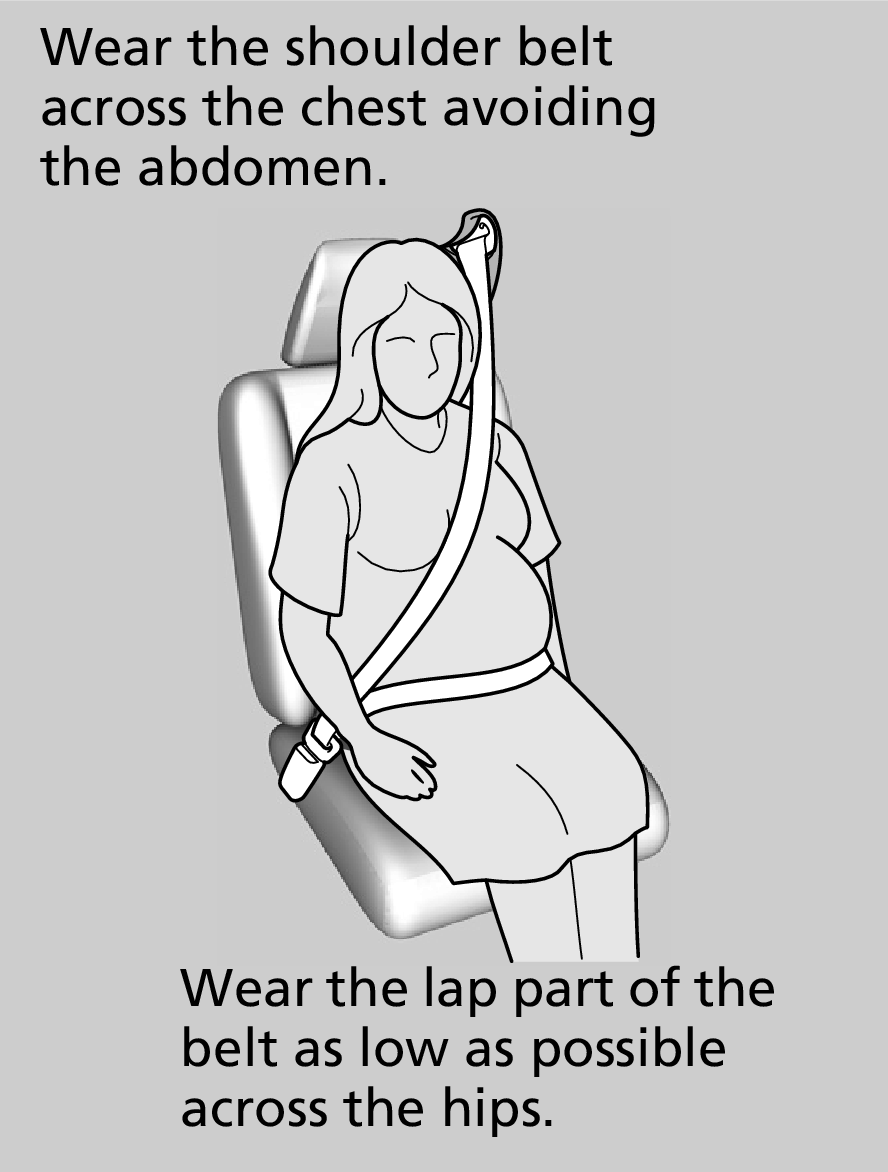Fastening a Seat Belt
- WARNING
- Improperly positioning the seat belts can cause serious injury or death in a crash.
Make sure all seat belts are properly positioned before driving.
- Detail
-
No one should sit in a seat with an inoperative seat belt or one that does not appear to be working correctly. Using a seat belt that is not working properly may not protect the occupant in a crash. Have a dealer check the belt as soon as possible.Never insert any foreign objects into the buckle or retractor mechanism.To release the belt, push the red PRESS button then guide the belt by hand until it has retracted completely.
When exiting the vehicle, be sure the belt is out of the way and will not get caught by closing the door.
Lap/Shoulder Seat Belt
After adjusting a front seat to the proper position, and while sitting upright and well back in the seat:
Front SeatsRear SeatsHead RestraintsMaintain a Proper Sitting PositionArmrest*
-
- Pull the seat belt out slowly.
-
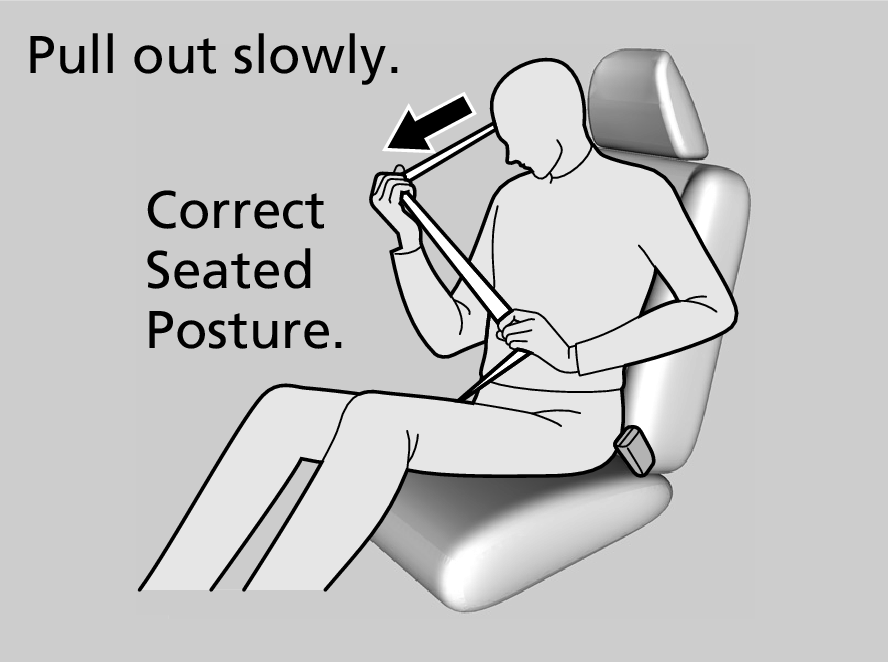
-
- Insert the latch plate into the buckle, then tug on the belt to make sure the buckle is secure.
- Make sure that the belt is not twisted or caught on anything.
- Insert the latch plate into the buckle, then tug on the belt to make sure the buckle is secure.
-
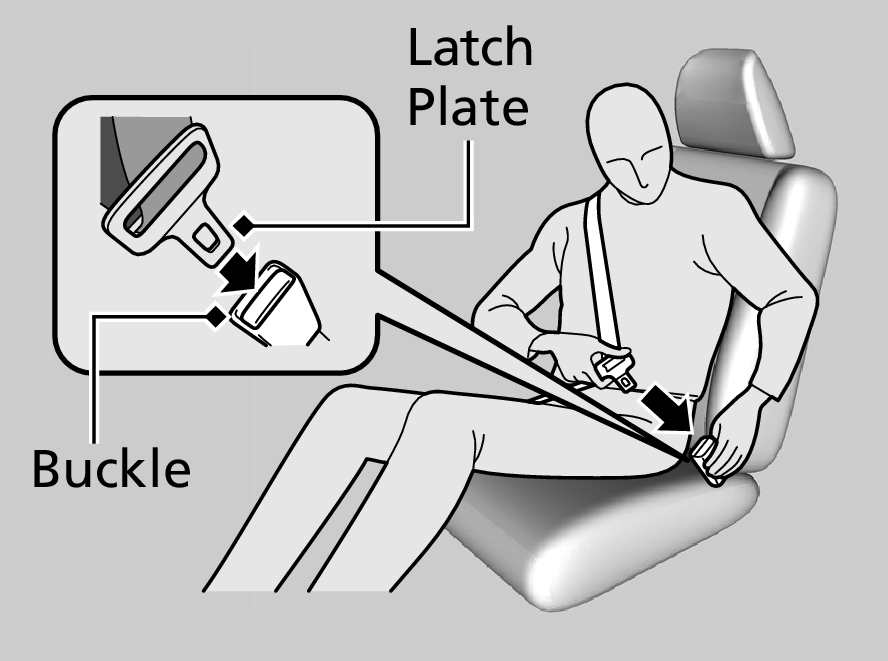
-
- Position the lap part of the belt as low as possible across your hips, then pull up on the shoulder part of the belt so the lap part fits snugly. This lets your strong pelvic bones take the force of a crash and reduces the chance of internal injuries.
- If necessary, pull up on the belt again to remove any slack, then check that the belt rests across the centre of your chest and over your shoulder. This spreads the forces of a crash over the strongest bones in your upper body.
-
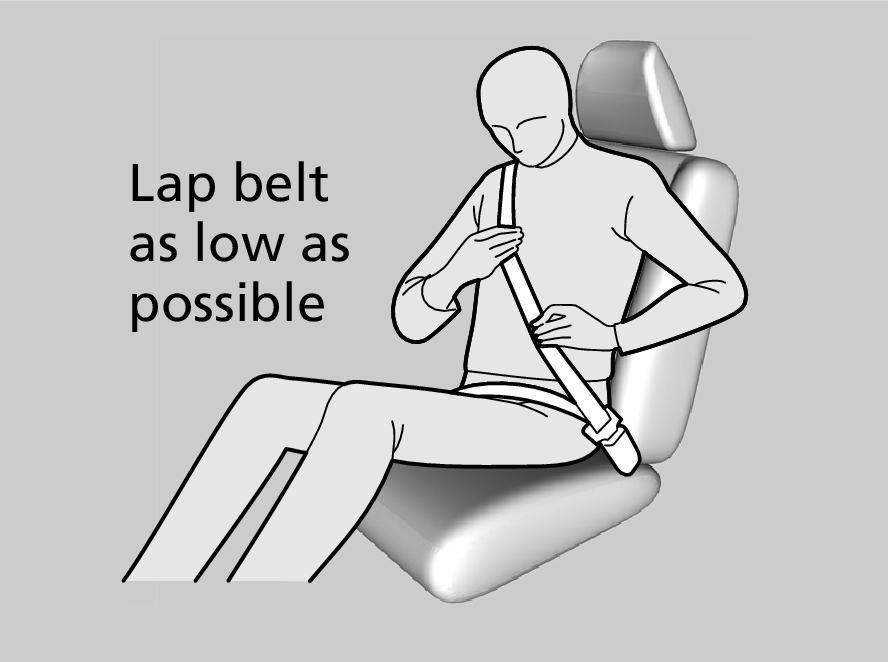
Adjusting the Shoulder Anchor*
The front seats have adjustable shoulder anchors to accommodate taller and shorter occupants.
-
- Move the anchor up and down while pulling the release outward.
- Position the anchor so that the belt rests across the centre of your chest and over your shoulder.
-
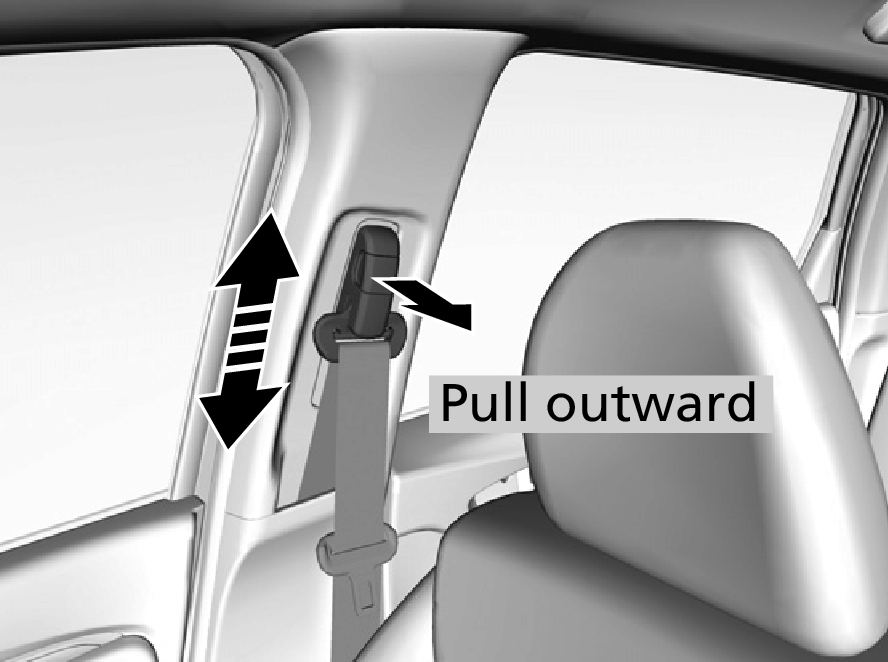
- Detail
-
The shoulder anchor height can be adjusted to four levels. If the belt contacts your neck, lower the height one level at a time.After an adjustment, make sure that the shoulder anchor position is secure.
Seat Belt with Detachable Anchor*
-
- Pull out the seat belt’s small latch plate and the latch plate from each holding slot in the ceiling.
-
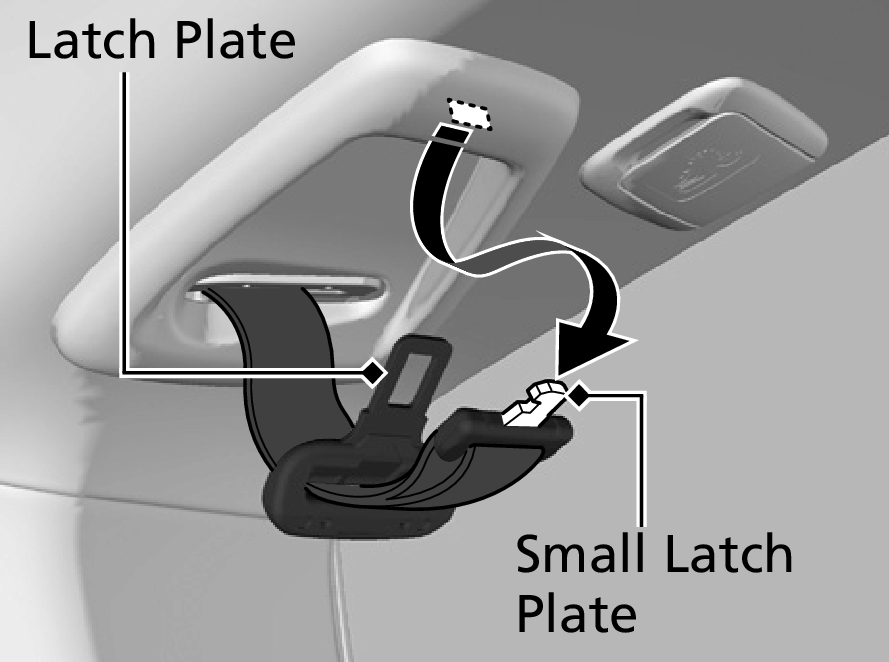
-
- Line up the triangle marks on the small latch plate and anchor buckle. Make sure the seat belt is not twisted. Attach the belt to the anchor buckle.
-
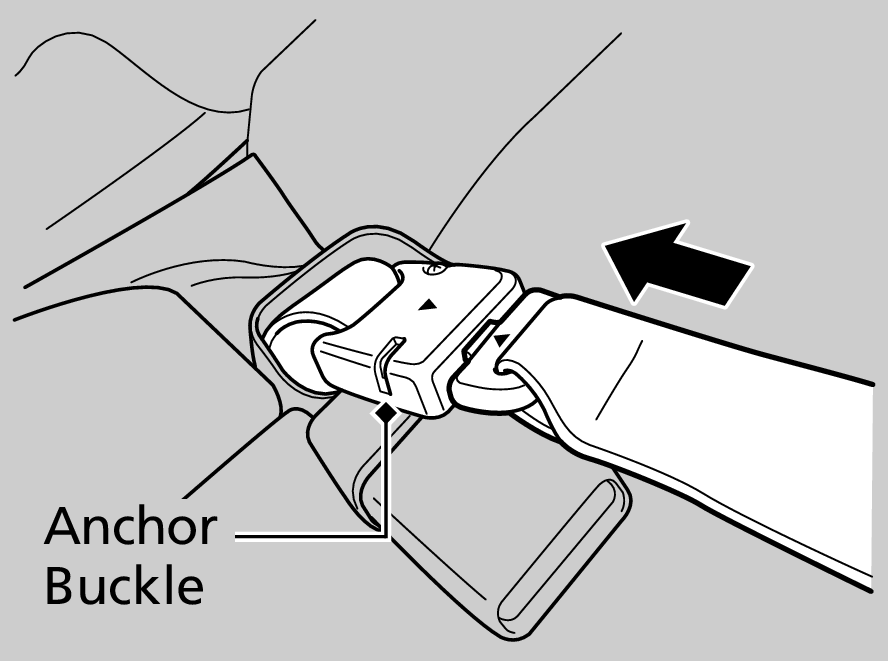
-
- Insert the latch plate into the buckle. Properly fasten the seat belt the same way you fasten the lap/shoulder seat belt.
-
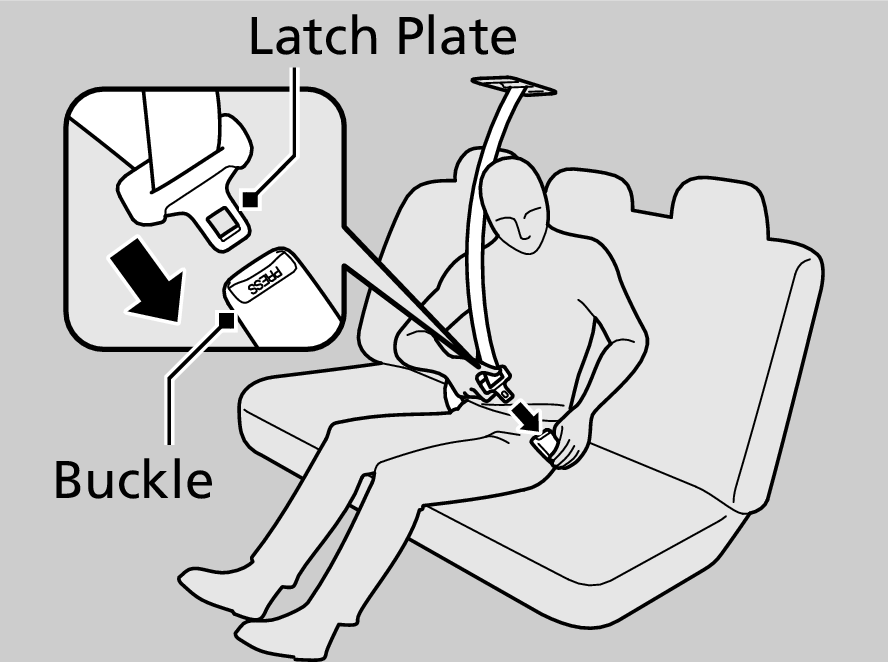
- WARNING
- Using the seat belt with the detachable anchor unlatched increases the chance of serious injury or death in a crash.
Before using the seat belt, make sure the detachable anchor is correctly latched.
- Detail
-
To unlatch the detachable anchor, insert the latch plate into the slot on the side of the anchor buckle.

Lap Belt*
-
- Hold the latch plate perpendicular to the belt while it tight. The belt length becomes adjustable.
- Slacken the belt before latching.
- Hold the latch plate perpendicular to the belt while it tight. The belt length becomes adjustable.
-
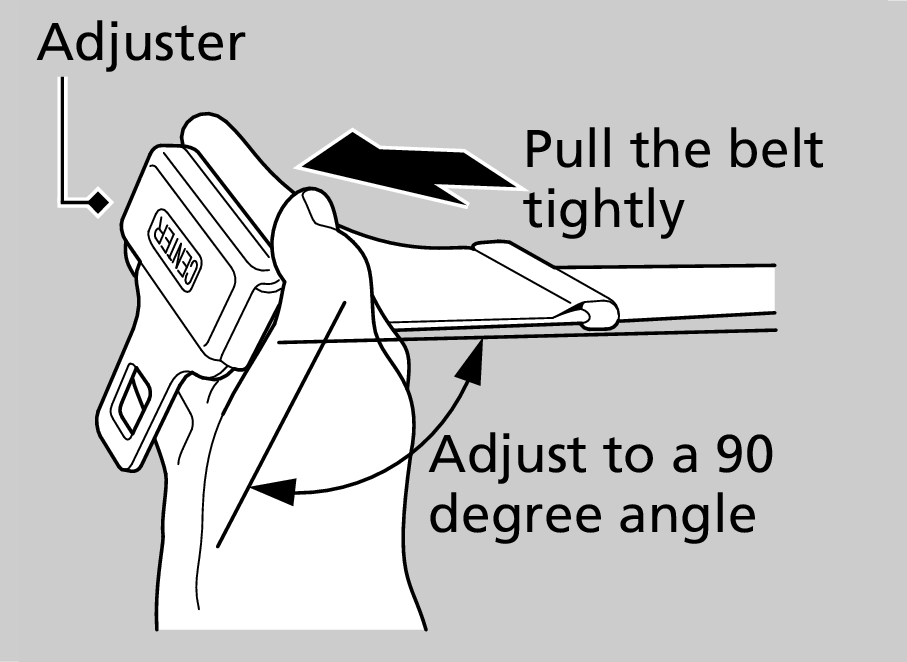
-
- Insert the latch plate into the buckle.
- Make sure that the belt is not twisted or caught on anything.
- Insert the latch plate into the buckle.
-
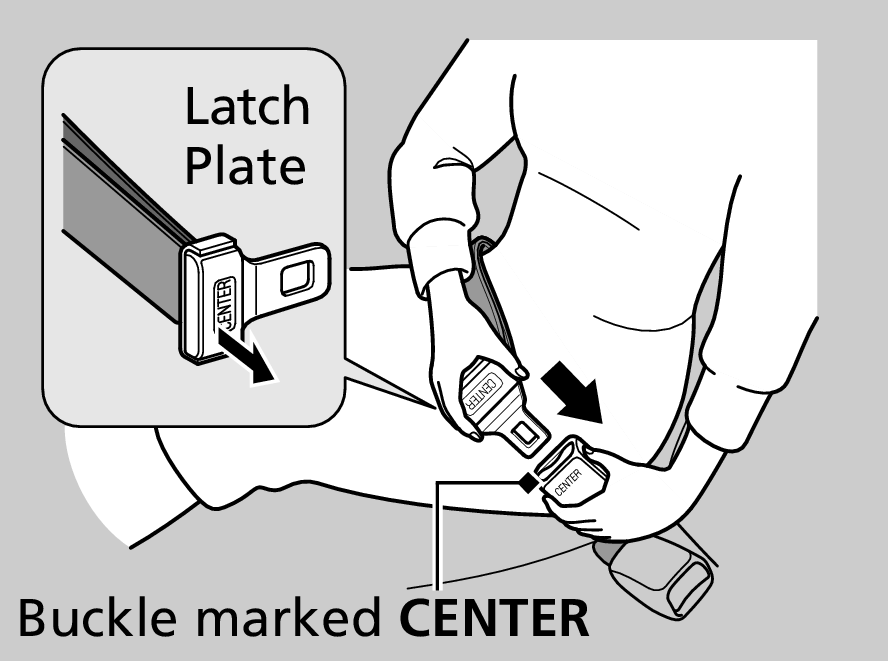
-
- Position the belt as low as possible across your hips, then pull up the belt so it fits snugly. This lets your strong pelvic bones take the force of a crash and reduces the chance of internal injuries.
- If necessary, pull up on the belt again to remove any slack.
-
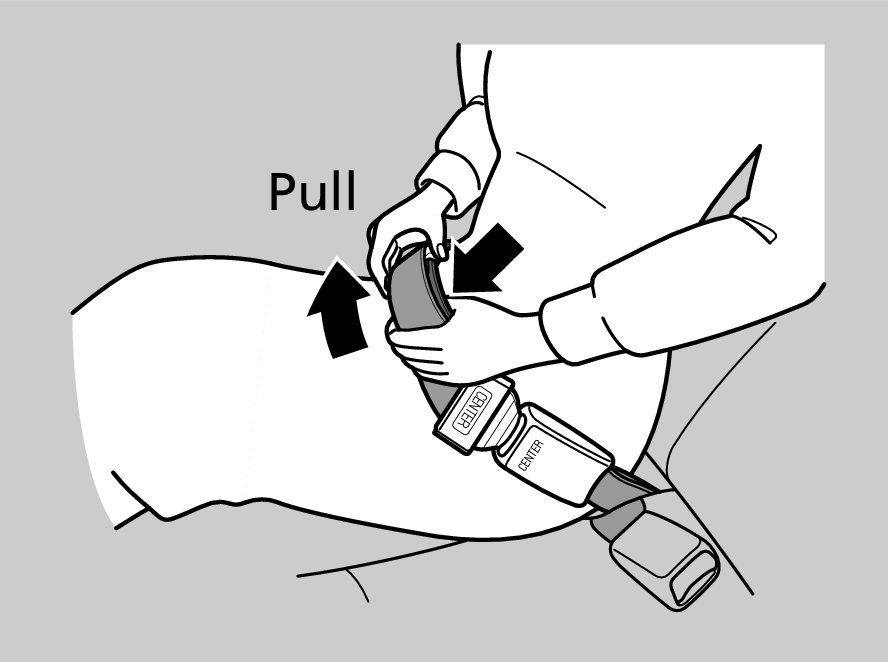
Advice for Pregnant Women
If you are pregnant, the best way to protect yourself and your unborn child when driving or riding in a vehicle is to always wear a seat belt and keep the lap part of the belt as low as possible across the hips.
- Detail
-
Each time you have a checkup, ask your doctor if it is okay for you to drive.To reduce the risk of injuries to both you and your unborn child that can be caused by an inflating front airbag:
- When driving, sit upright and adjust the seat as far back as possible while allowing full control of the vehicle.
- When sitting in the front passenger's seat, adjust the seat as far back as possible.
* Not available on all models
- Recommend page
